Scuba Diving Australia: Top 15 Dive Spots

As one of the top diving destinations in the world, the abundance of Australian dive sites makes it a must-see for divers.
Our 15 top dive sites in Australia offer a little something for every type of diver. From historic shipwrecks and vibrant coral reefs, to stunning marine life and endless sea caves, Australia offers some of the most remarkable underwater adventures awaiting exploration by curious divers.
The climate in the Australian waters largely depends on the season, with temperatures ranging between 60–65°F in winter and 70–80°F during summer. As for visibility, you can expect it to be clear the majority of the year; though it does depend on location and conditions. Visibility can reach 30 meters deep or more during summer months.
With its warm climate and clear waters, diving in Australia offers plenty of potential for a spectacular trip.
Scuba Diving South Australia
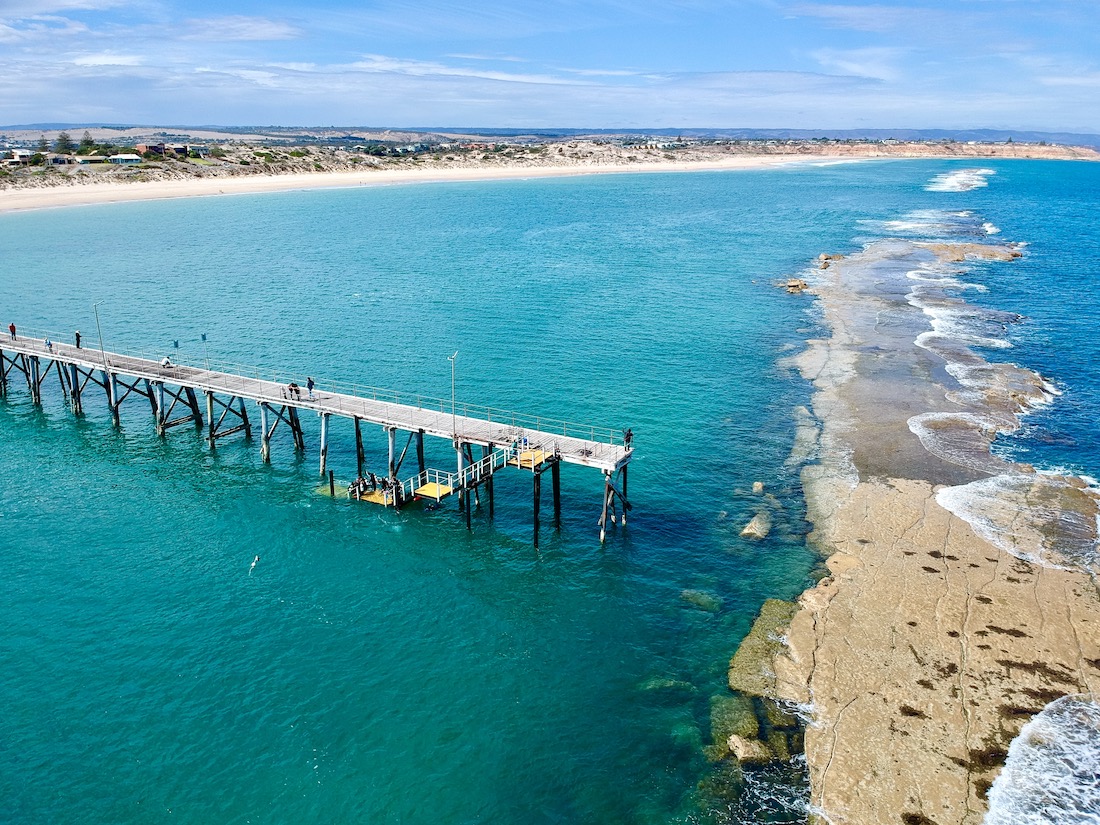
The state of South Australiais known for some of the best scuba diving sites in the country. With more than 12,000 kilometers (7,500 miles) of coastline full of bays and coves, there's plenty to explore in this beautiful state.
Experienced and new divers alike can find their chosen adventure in South Australia. The diverse range of sites ensures that all levels can be challenged by the beauty below the surface.
South Australia's unique mix of temperate and tropical waters offer divers incredible visibility, especially near shore. The average semi-tropical water temperature ranges from 65°F in winter to 75°F in summer, making year-round diving a pleasure.
The sea life alone makes South Australia worth the dive, with endangered species including Grey Nurse Sharks, Southern Right Whales, and penguins all located within its large body of water. But that's not all-divers can explore historic shipwrecks left behind by old vessels, or take a tour through one of the many beautiful reef systems the area boasts.
Edithburgh Jetty
Immerse yourself in the beauty of the Edithburgh Jetty, situated on the southeastern edge of South Australia's Yorke Peninsula. Home to arguably some of the most exquisite jetties this state has to offer, a dip at Edithburgh is an absolute must.
Underwater photographers know the Edithburgh Jetty as a top spot packed in a small space that has remarkable macro life living within it. Every organism found here offers a unique experience not available in many other places around the world; therefore making it an extraordinary spot for any diver's next adventure.
The jetty is home to an abundance of marine life ranging from the giant cuttlefish who come to spawn near the jetty every autumn, to many species of colorful fish and other creatures including green turtles, seahorses, and sea snails.
Ex HMAS Hobart, Rapid Bay
Dive and explore the 134 meter wreck in Encounter Marine Park Rapid Head Sanctuary Zone. This Australian dive spot has plants, fish, animals and the shipwreck are all safeguarded for your enjoyment.
You'll need multiple trips to view it entirely. Amateur divers are welcome to explore, though advanced certification is generally recommended for this particular dive. To reach the wreck, it is best to come by boat during low tide.
The Ex HMAS Hobart is a decommissioned former warship and provides a unique perspective of life beneath the sea. Exploring the HMAS Hobart gives divers access to hidden secrets underwater and gives them unique sites to behold. Those who dive here will find beautiful coral, big fish, photogenic marine life, and cultural heritage sites.
Recognized as one of South Australia's (and even the nation's) most desirable dive sites, this destination joins other remarkable locations in the region such as Port Noarlunga Reef and Aldinga Reef to provide an unparalleled diving experience.
Port Noarlunga, Adelaide
Port Noarlunga is an ideal site for divers looking for an array of unique experiences. Located in Adelaide, this popular Australia scuba diving site offers up numerous diving experiences that are brimming with extraordinary marine life.
An adrenaline-filled jetty dive is a great way to get a firsthand look at the amazingly diverse marine world below. Port Noarlunga caters well to both beginner and advanced divers as there are plenty of wrecks and caverns to discover in an environment.
Port Noarlunga is the closest and most popular scuba diving spot in the capital city of Adelaide, suitable for divers of all abilities. With a stunning coral reef located close to shore, this dive site stretches north-south in two distinct parts. The break in the reef, aptly named "the gap," serves as a gateway between the inner and outer sections of this majestic structure.
Begin your marine exploration at Marker 1, nestled adjacent to the jetty and ranging from depths of 3 meters. Follow the submerged pathway through 12 markers that culminate in an 18 meter dive by Marker 12 situated near the outer edge of The Reef close to the Jetty.
Scuba Diving Tasmania
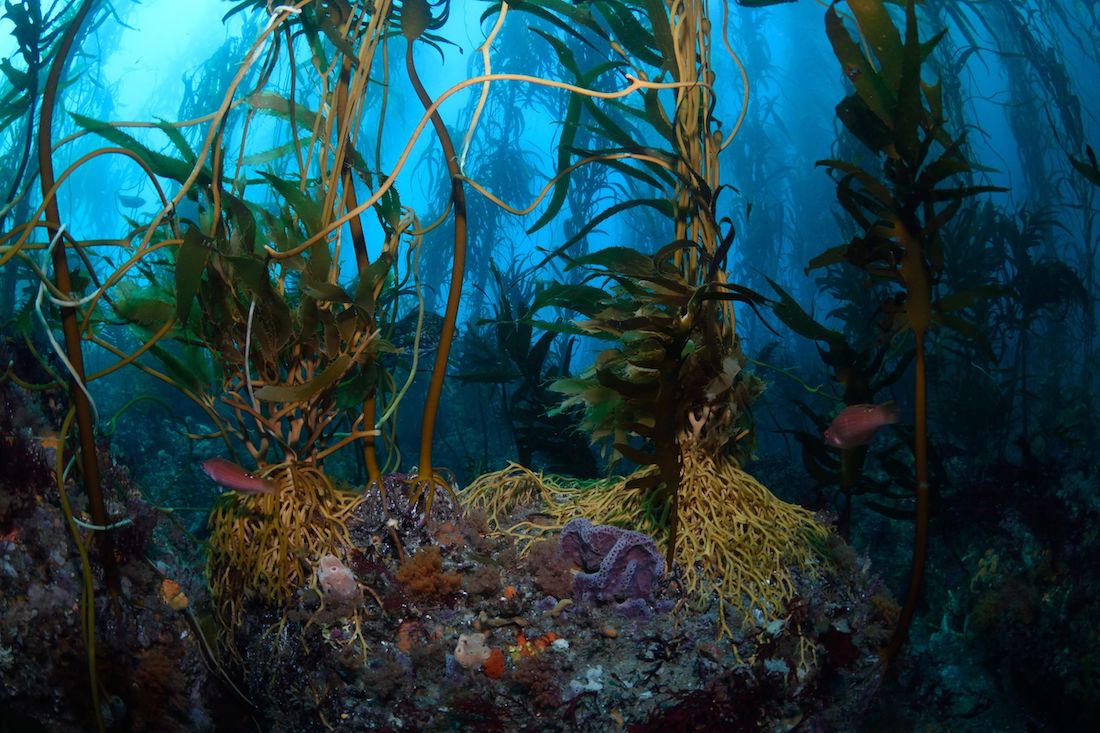
Like all of Australia's dive sites, Tasmania takes a top spot on most diver's top must-visit areas.
Not only can you explore some of the clearest water on Earth, but you'll have the opportunity to discover the colorful marine life that lurks beneath the ocean surface. From graceful manta rays to confetti-like coral formations, you never know what amazing creatures or vibrant colors you'll come across while exploring these waters. Underwater caves, deep sea canyons, and historic shipwreck, there are countless hidden wonders in the depths below.
The cool southern waters of Australia offer an array of plant life, with kelp and brown algae forming incredible underwater forests. In fact, South East Australia's temperate waters are the most abundant in marine plants on Earth-particularly in Victoria and Tasmania. These nutrient-rich habitats provide a unique ecosystem for all creatures that live among them and make for some of the best diving in Australia.
Divers hoping to explore the underwater wonders of Tasmania, Australia should prepare for a wide range of weather and water temperatures. Tasmanian waters are unpredictable with variables such as cold fronts, heavy rains, and storms coming from different directions quickly.
Visibility can range from virtually non-existent to quite the distance depending on currents and tides in the area. Water temperatures can swing between highs of about 70°F during summer and lows of about 50°F during winter. Divers need to prepare in advance for these weather swings.
Magic Garden, Governor's Island Marine Reserve
Magic Garden Marine Reserve on Governors Island is an underwater paradise full of vibrant coral and colorful fish. Aside from the incredible formations and creatures of this aquatic ecosystem, divers can appreciate first-hand the conservation efforts that allowed such an abundance of life to thrive and be protected.
What also sets Magic Garden apart from other dives is that it is generally accessible at all depths, so adventurers of many skill levels can take part in this eco-friendly journey beneath the waves.
Situated at the base of a series of vertical walls stretching from Bicheno's shallow waters to an impressive depth of 38 meters, Magic Garden captivates with its breathtaking tunnels adorned in vivid, delicate marine life. Dolphins, seals and whales are often spotted frequenting Bicheno's sheltered waters.
Giant Kelp Forest, Tasman Peninsula
The Munro Bight Giant Kelp Forest on the Tasman Peninsula in south-eastern Tasmania is an example of an intact, sprawling ecosystem that spans several acres.
Submerging yourself in the kelp forest is a one-of-a-kind experience, as you wander through this underwater wonderland. If diving deeper is your preference, then don't miss out on Port Arthur to witness the legendary SS Nord shipwreck-a 40 meter dive. For the most captivating experience of the forest, visit from October to December or April to June.
Giant Kelp is a unique seaweed whose fronds can extend up to 45 meters. Anchored firmly by their holdfast, the bladders of gas keep these large strands buoyed on the surface and can create a seaweed canopy. Unmistakable in size and presence, Giant Kelp stands out among other marine vegetation for its sheer uniqueness.
Bruny Island
Bruny Island is another dream destination for scuba divers. Located off the southern coast of Tasmania in Australia, this stunning location consists of precipitous cliffs, pristine white beaches, and an array of marine life. While some dive sites are accessible from the shore, boat diving requires less effort and provides access to many incredible locations.
From the famous Arthur's Rock to the breathtaking Fortress Cave, Bruny Island boasts Underwater photographers have the opportunity to capture Arthur's Rock, Fortress Cave, and will relish in the vibrant colors of kingfish, wrasse, and other colorful reef dwellers that populate these waters. Blue Penguins are known to be darting in and out of the water keeping diving photographers on their toes.
Wreck diving enthusiasts enjoy exploring what lies beneath the surface at King George Whiting Metre Banks. For the more adventurous diver, there are challenging swim-throughs available at Billy Rockhole which provide ample opportunity for exploration and discovery.
Dolerite cliffs loom above the sea, creating a landscape of caverns and prominent overhangs. Dive deep into the depths of sea cliffs and surround yourself with migratory Right Whales as you discover immense sea caves.
Scuba Diving Western Australia
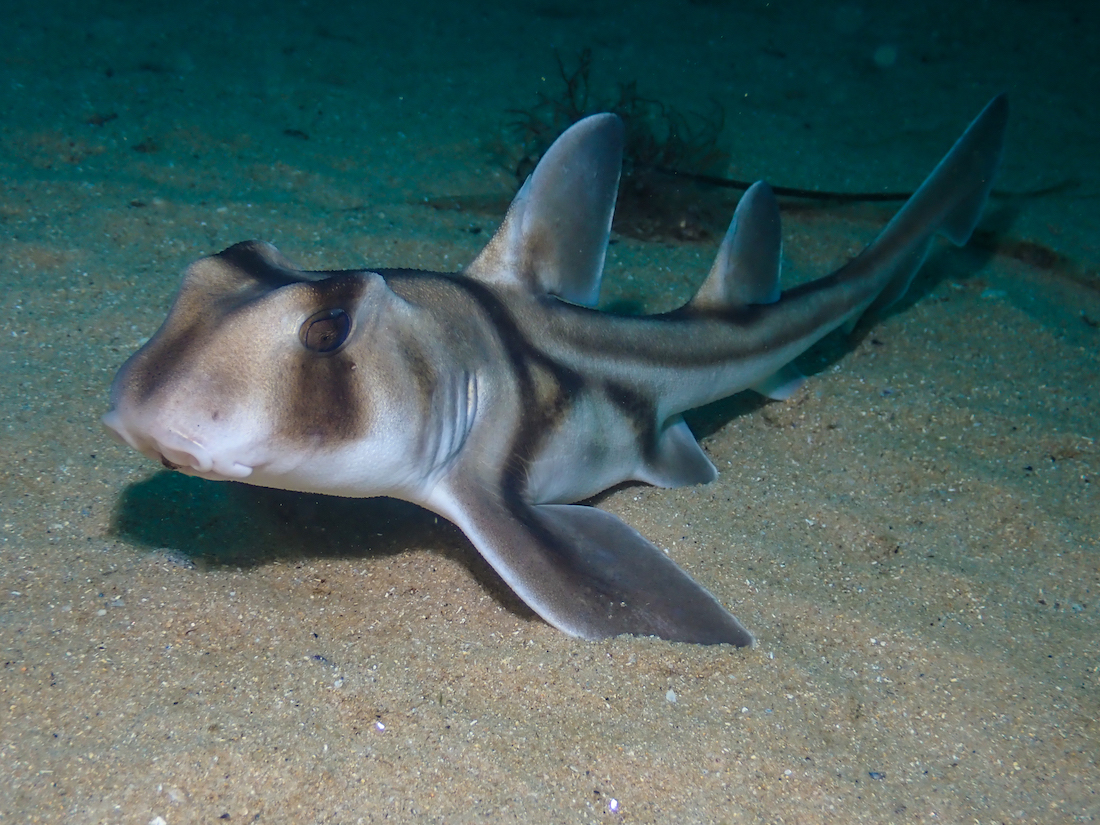
Western Australia is a popular spot to go scuba diving because of the wildlife that lives under the sea. The climate of the region is generally hot, humid and dry. The water's temperatures range greatly depending on where you're diving; it can be cool in winter and warm in summer depending on where and how far deep you dive.
Summer is usually the best time to visit, as fall, winter, and spring tend to be quite unpredictable. Weather-wise, it is often less windy in the mornings or evenings so these are ideal times for a plunge into the depths of the Indian ocean.
Regardless of when you visit, western Australia's waters are full of stunning flora and fauna.
Rowley Shoals Marine Park, Broome
Off the coast of Broome lies Rowley Shoals Marine Park, a western Australia dive site. Like many other sites in Australia, divers will yet again find a unique array of creatures and coral reefs to explore.
With its crystal clear waters and diverse marine life, the park provides an unforgettable experience for certified divers. Visitors can drop into a stingray nursery, swim alongside graceful sharks, or encounter colorful fish from every corner of the reef.
The chance to glimpse some of Australia's most amazing aquatic species makes scuba diving in Rowley Shoals Marine Park a must for any diver in the area.
For a particularly fun diving experience, look no further than the three atolls of The Shoal. Here you can find breathtaking 360° views of crystal clear turquoise waters with surprisingly little human or vessel presence to disrupt your exploration.
Opera House, Rottnest Island
Scuba diving in the iconic Opera House of Rottnest Island is another Australian dive site on many bucket lists.
Located off the coast of Western Australia lies Rottnest Island-a spectacularly beautiful island that provides experienced and new divers alike with the opportunity to see marine life unique to the area.
Dive into the depths of the Opera House and you'll find colorful coral formations and an abundance of fish species such as kingfish, seahorses, moray eels, sweetlips, and stingrays. Clear visibility throughout this site allows divers to take their time exploring in the easy dive conditions.
For those interested in scuba diving with sharks in Australia, Rottnest Island is also home to the Shark Cave. The Shark Cave acts as a refuge for mature Grey Nurse Sharks during daylight hours, providing security before they leave to hunt at nightfall.
This particular cave extends from 15 meters deep up to 26 meters in its rear section. Grey Nurse sharks are generally skittish, though divers exploring the cave may find themselves up close to these quiet creatures.
Batavia Shipwreck, Abrolhos Islands
The Batavia Shipwreck at the Abrolhos Islands is an adventure any diver would want to experience. Here you'll be able to explore the wreck of one of Australia's most famous shipwrecks-occurring in this spot in 1629.
The Batavia Shipwreck is just four to six meters deep in the Indian Ocean, letting divers of all abilities be able to explore and experience this area. The outline of the hull remains, still equipped with cannons and anchors.
Over time, the diverse marine life that has claimed this wreck as its home has attracted divers from around the world. There are countless colorful species of coral and fish swimming through the ship's arched corridors. Just off some areas of the site lies thriving communities with reef walls, gardens, and diverse sea life that make for amazing glimpses into the marine life that has taken over the shipwreck centuries later.
Scuba Diving Queensland
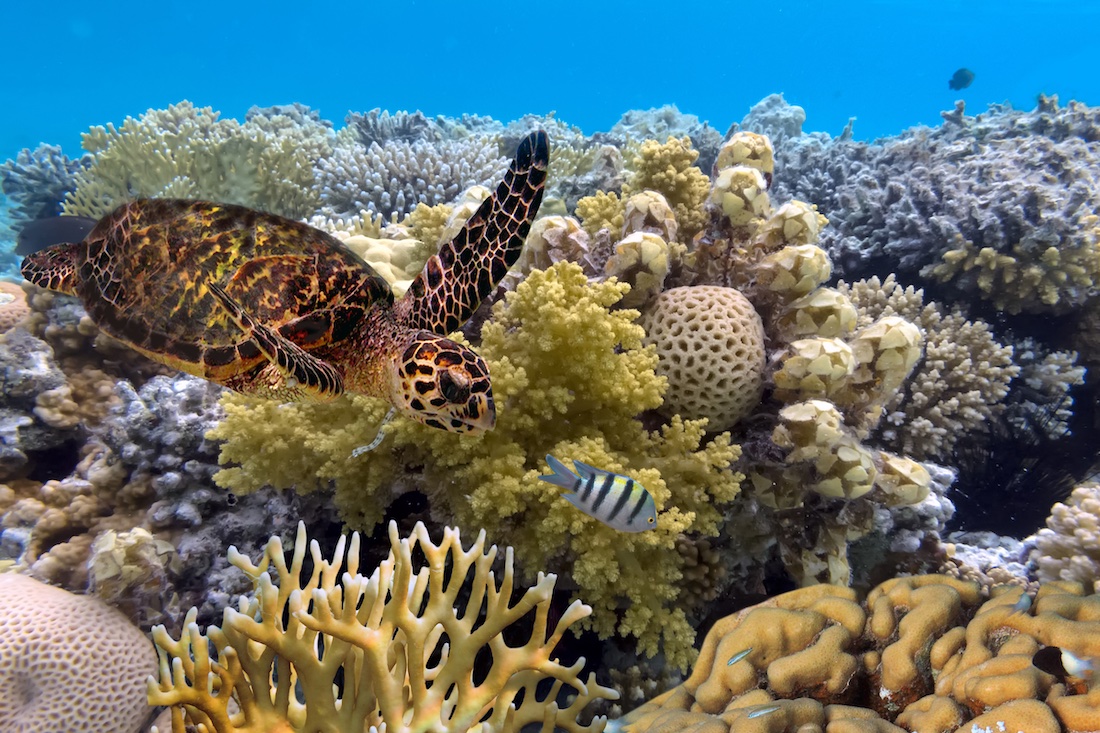
Queensland, Australia is a sought-after destination for scuba diving due to its temperate yet diverse climate. The varied weather between summer and winter creates an array of underwater occurrences-tropical waters in the summer months and cooler temperatures during the winter season.
Divers can expect to encounter diverse marine life like vibrant reef systems abundant in soft coral and sea grasses and large predators such as crocodiles along the coast. Regardless of the time of year, Queensland's waters maintain an average temperature of around 75°F, often ideal for scuba diving.
There are miles of shoreline that offer opportunities to explore caves, shipwrecks, pinnacles and more. It's no surprise that Queensland has become a world-renowned dive site for scuba divers from around the globe.
SS Yongala Wreck, Cape Bowling Green
Located off the coast of Cape Bowling Green in Queensland, the SS Yongala Wreck is a major shipwreck diving site to experience. The shipwreck is more than a century old, having sunk during a cyclone in 1911.
Abiding by the Historic Shipwreck Act of 1976, The Wreck is preserved within the World Heritage List and safeguarded in the Great Barrier Reef Marine Park and lies 15 meters beneath the surface. Today it provides a scuba experience rich with history as well as sea life. Thanks to its marine park location, the entire wreck is now teeming with vibrant coral growth and other marine critters.
The famous shipwreck continues to a depth of 29 meters and is the only large reef structure in the region. The marine life that gathers at the wreck creates one of Queensland's best dive sites and is especially popular among underwater photographers. Divers should make sure to take advantage of our Great Barrier Reef tour during whale season and witness the majestic sight of whales as they migrate through warmer waters.
Osprey Reef, Coral Sea
Osprey Reef in the Coral Sea is a scuba diving dream. Located more than 500 miles off the east coast of Australia, this underwater wonderland is known for its spectacular underwater visibility and wide variety of coral and marine life.
Divers could encounter reef sharks, green turtles, manta rays, and dolphins. One of the best attractions Osprey Reef has to offer is the Star of Scotland-an 1877 shipwreck that lies 36 meters below the surface.
Australia is renowned for its abundance of sharks and shark diving and Osprey Reef lets divers wall-dive with the sharks that live below. Experience an incredible shark feed, and watch as gray reef sharks, silky sharks, hammerheads, and even the occasional silver tip feast right in front of you.
Heron Island, Gladstone
Heron Island, in the Gladstone region of Australia, is a challenging and rewarding site for divers. The clear waters and wide range of aquatic life is fine for beginner dives to more experienced deep-water dives.
Along with over 500 common species of coastal fish such as tropical wrasses, damselfish, and clownfish, there are also larger predators like hammerhead sharks and sea turtles.The aquatic life near the surface is mostly comprised of bright corals and colorful fish and the deeper reef walls offer something even more stunning-protected plateaus surrounded by crystal clear lagoons teeming with even more marine life.
The surrounding waters of Heron Island exist at an average depth of 10–25 meters, creating a unique habitat for over 1,500 species of reef fish. Approximately 60% of the aquatic life inhabiting the Great Barrier Reef can be found in these shallow depths, with 72% existing exclusively around this island.
Scuba Diving Victoria
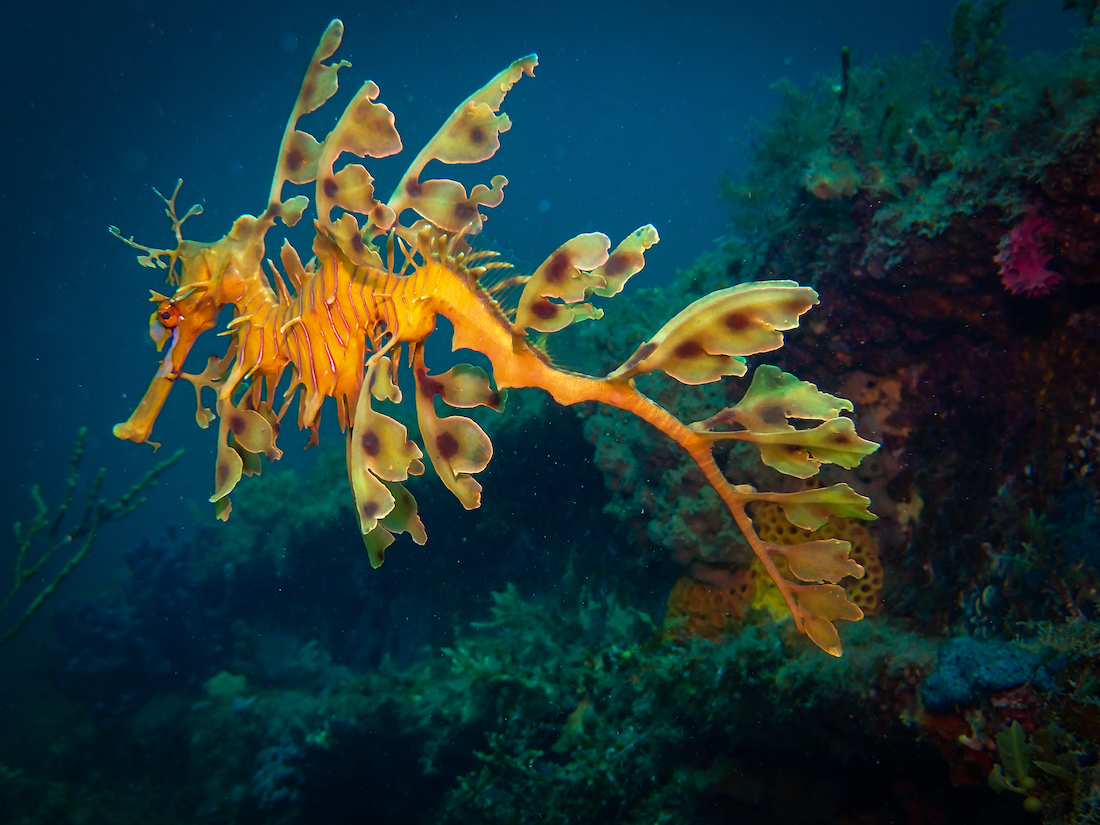
Victoria, Australia is yet another prime Australian dive site. With its mild climate and something different to explore all year round, divers of all levels can enjoy the spectacular underwater views. Depending on the season, water temperatures range from as low as 55°F in winter to 75°F in summer. Water visibility typically ranges between 10–30 meters and there's plenty of underwater life to witness with over 500 species of fish, more than 100 species of jellyfish, and 3500 species of molluscs.
Victoria's unique sites provide divers with an array of plentiful marine opportunities; such as swimming with tame seals at Eagle Rock Marine Sanctuary or exploring historical shipwrecks such as the SS Machell off Wilshire Beach. Divers looking for a more challenging dive can try their hands at cave diving.
Port Phillip Bay
Port Phillip Bay offers an array of underwater adventures for new and experienced divers. The bay's calm waters and visibility up to 10 meters afford a memorable experience for all visitors.
Its depths are teeming with aquatic life from cuttlefish and seahorses, to the weedy sea dragons often sighted at Mud Island Marine Sanctuary. Sunken ships give divers a glimpse into history, while vibrant coral gardens bring color to the turquoise depths.
Whether you're keen to observe the wildlife or explore man-made wrecks, scuba diving in Port Phillip Bay promises an unforgettable experience.
Mushroom Reef Marine Sanctuary
Located in the Great Barrier Reef, Mushroom Reef Marine Sanctuary is yet another must-see destination for scuba divers.
Resembling a mushroom, the Mushroom Reef takes its name from its largest intertidal platform. Perpetual waves refract around this reef formation and deposit basalt cobbles into a gap between the reef and shoreline - an anomaly known as tombolo.
With crystal clear azure waters, amazing biodiversity, and colorful coral gardens, Mushroom Reef provides breathtaking scenery that sets it apart from other dive sites. Marine life here includes parrotfish, yellow kingfish, angelfish and hawksbill turtles - all of which are commonly seen by divers.
What's more, native oyster beds are home to some of the most diverse fish and invertebrate communities on the Great Barrier Reef-including endemic species. With visibility often reaching beyond 30 meters, diving at Mushroom Reef is ideal for diving.
HMS J4 Submarine
Adventurous divers who are looking for something out of the ordinary will find just that when they go scuba diving at HMS J4 Submarine in Victoria.
Dive enthusiasts can explore this sunken Lithuanian submarine and get an up-close look at its turbines and rudder-which have been completely covered in vivid marine invertebrates like nudibranchs. Clear visibility lets divers see up to 30 meters underwater. The clear waters allow divers to see interesting views from inside the vessel and take vivid underwater photographs.
While scuba diving at HMS J4 Submarine is suitable for all levels, it's recommended to leave this to divers who have their advanced certification.
Choosing the Best Dive Gear for Your Adventures Down Under
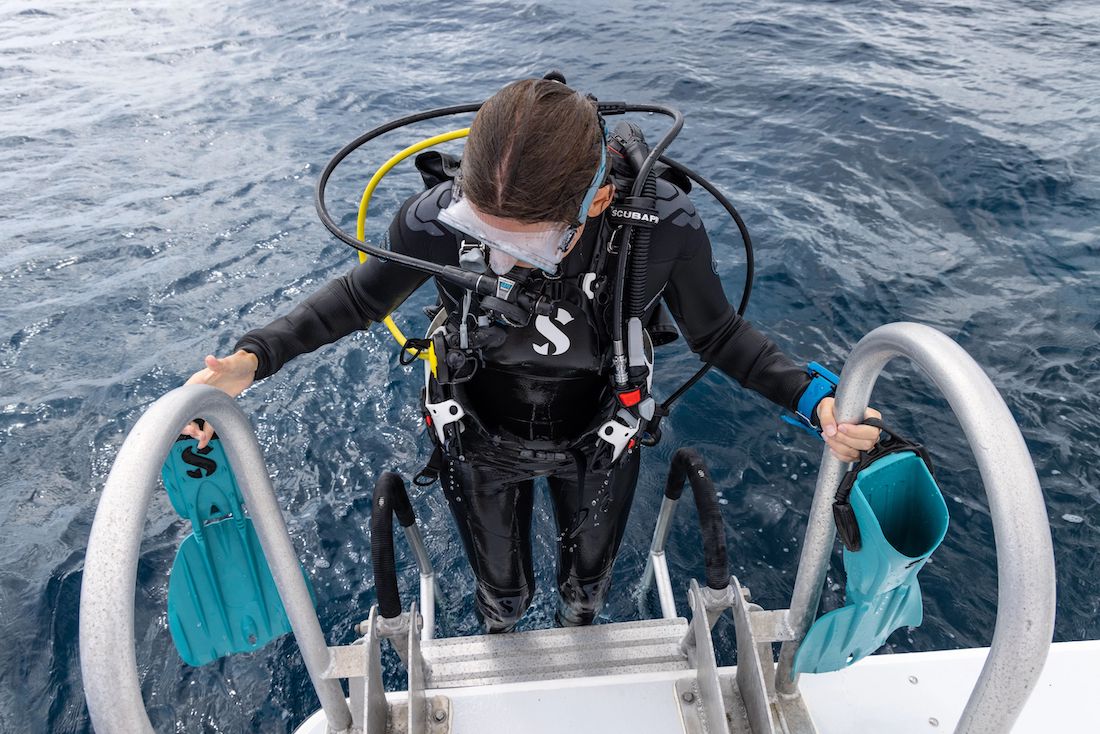
Australia's waters are rich with marine life and stunning scenery, making it one of the best scuba diving destinations around the world.
Researching both the location and diving operator ahead of time can give you valuable information about tide times, weather conditions and what creatures you may encounter in each area.
With so many different dive spots to explore, it would be nearly impossible to visit all 15 spots in one trip. Because of this, you'll want to ensure that you have the proper fins for whatever dive spot you choose. Depending on where and when you go, you should bring the right rash guards or wetsuit.
To make packing easier, use our Scuba Equipment List to prepare yourself and team for your Australia scuba diving adventure.






